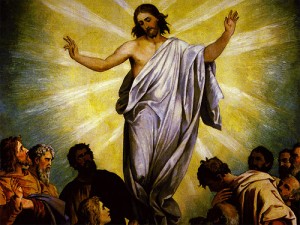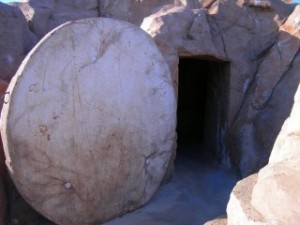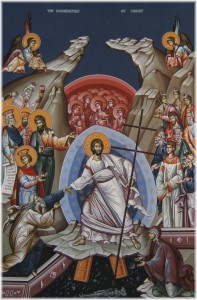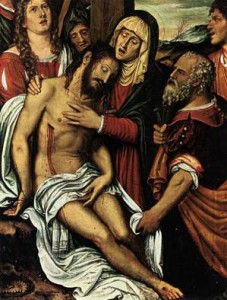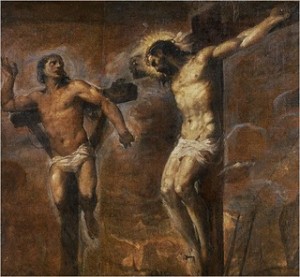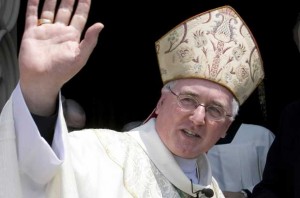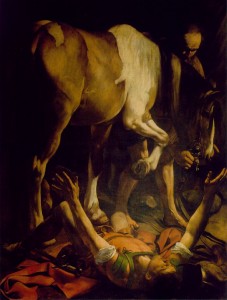 An empty tomb alone does not a resurrection make, and that’s why the appearances of the risen Jesus are so important. With Christ’s resurrection, as with the truth of Catholicism in general, what we have is a series of converging and convincing arguments that are the most plausible explanation of the facts that we have. So, let’s take a deeper look at the evidence that Jesus appeared alive in bodily form to many after his death and burial.
An empty tomb alone does not a resurrection make, and that’s why the appearances of the risen Jesus are so important. With Christ’s resurrection, as with the truth of Catholicism in general, what we have is a series of converging and convincing arguments that are the most plausible explanation of the facts that we have. So, let’s take a deeper look at the evidence that Jesus appeared alive in bodily form to many after his death and burial.
My former professor and resurrection expert, Dr. Gary Habermas, lists ten considerations in favor of Jesus’ resurrection appearances. These ten points have two things in common: they are attested by scholars, both Christian and skeptic alike; and natural phenomenon alone fail to explain all of the data. Today, let’s look at those facts that have to do with the appearance to St. Paul. It’s good to start with him, because Paul’s conversion was a key event in the spread of the early Church. The question is, what caused Paul to convert, and what caused his preaching to be so successful? The best explanation is the bodily resurrection of Jesus. Here’s why:
1. No scholar seriously doubts the historical fact of St. Paul’s conversion. The facts are: that he was a Pharisee who violently opposed the nascent Church, and that he subsequently became not only a believer in Jesus, but the greatest missionary of all time – and these facts are not in doubt. Paul himself stated that the reason he became a Christian was because the risen and glorified Christ appeared to him (1 Cor. 9:1, 15:8; Gal. 1:16). The man’s own opinion of the matter counts! Just about every New Testament scholar maintains that Paul wrote most, if not all of the NT letters attributed to him, so the biographical details he provided are firsthand testimony that Paul believed he encountered the risen Lord. At any rate, something has to explain Paul’s radical change from persecutor to propagator of the new faith -and the best explanation is the resurrection.
2. In 1 Corinthians 15:3 and following, Paul quotes what is universally acknowledged as an early Church “creed” – a formula that predates Paul’s letter, likely by two decades. The composition of this creed that focuses on Christ’s death, burial and resurrection appearances thus dates to within mere months of the event of the Jesus’ resurrection. This makes it extremely unlikely that it is a legendary account, embellished over time. The presence of living witnesses to the events themselves also mitigates against that thesis. Paul himself notes (1 Cor. 15:6) that on one occasion, Jesus appeared to more than 500 people at once, most of whom were still alive and ostensibly willing to be interviewed about the facts. Habermas notes that most scholars believe that Paul received this creed abut AD 35, from the apostles Peter and James (see Gal. 1:18-19). Habermas also confirms that Paul’s choice of words in this passage, such as the Greek word historeo, indicates that he systematically interviewed, if you will, the apostles about the events behind this creed.
3. Paul was so concerned that he was preaching an historically accurate message that he returned to Jerusalem 14 years later – to once again submit his message to the other apostles for examination (Gal. 2:1-10)! He was extremely concerned about the accuracy of his statements. This time, Paul specifically mentions John’s presence – thus confirming that all three apostles who were part of Jesus’ “inner circle”, the men who knew our Lord best while he was on earth, ratified Paul’s message once again.
4. Not only did the other apostles confirm Paul’s take on the gospel, Paul in turn confirms theirs: he verifies that he knew what the other apostles were preaching (1 Cor. 15:11), and that all of them were preaching the same message of Jesus’ resurrection with one voice. In light of all this, the oft-repeated idea that some revisionist scholars have that Paul, not Jesus, was the “inventor” of Christianity is obviously untenable.
Paul’s testimony to the appearances of the risen Christ are crucial to the overall argument. But there’s far more to be explored. In the next installment of this series, we’ll consider six more facts that Habermas puts forth to buttress the case for the resurrection appearances of Jesus Christ.



